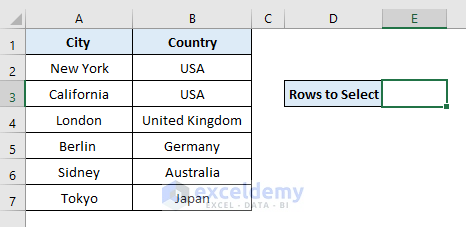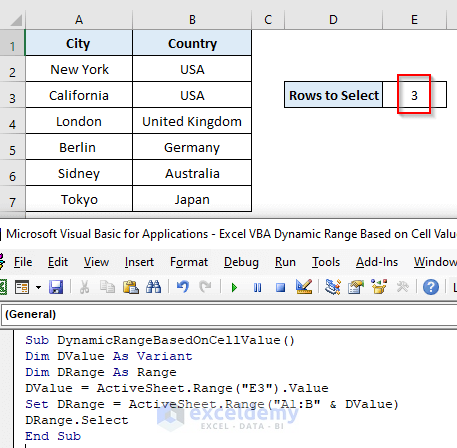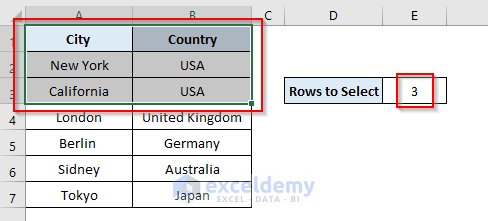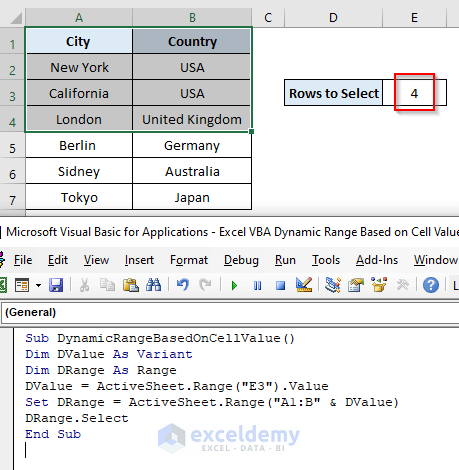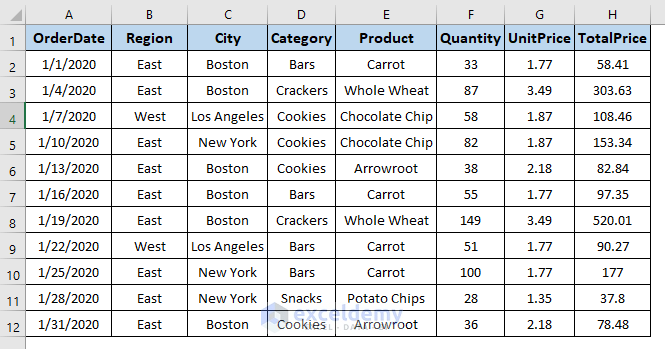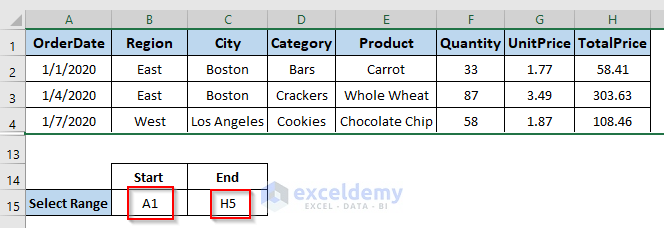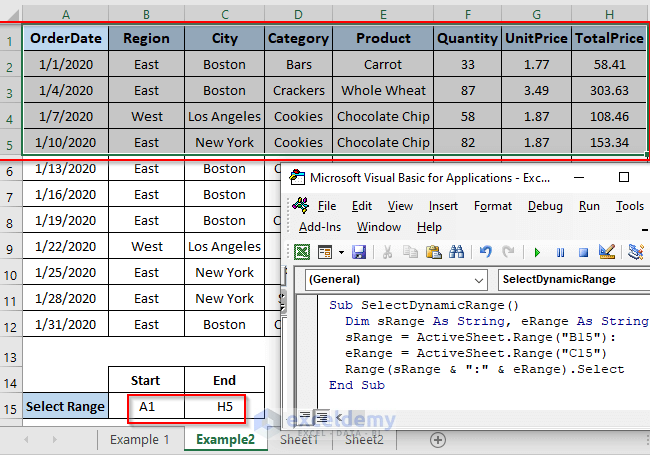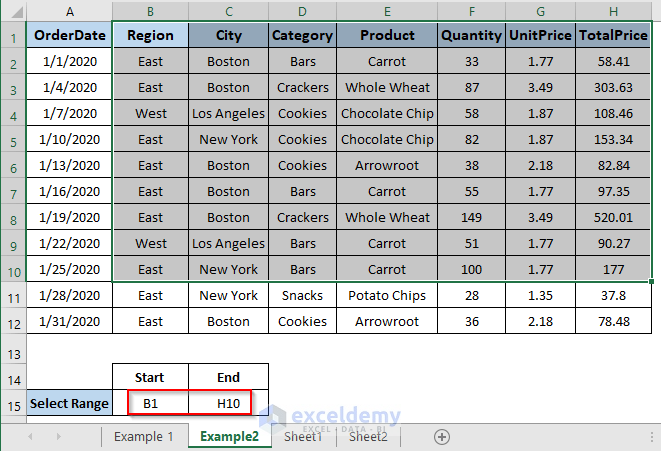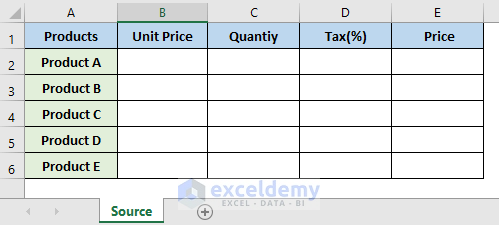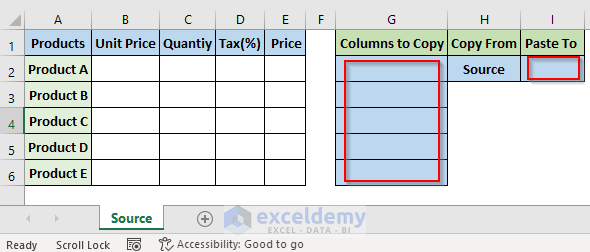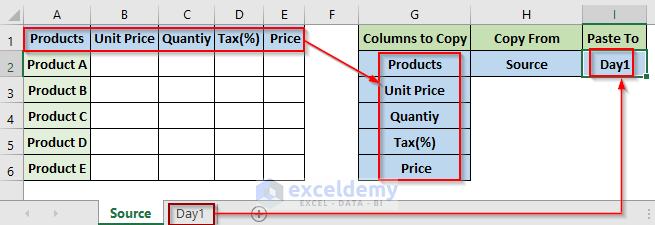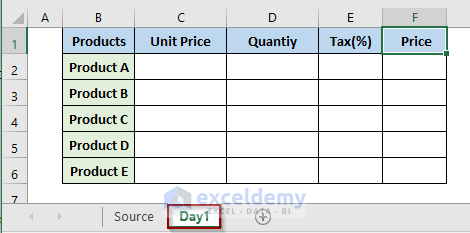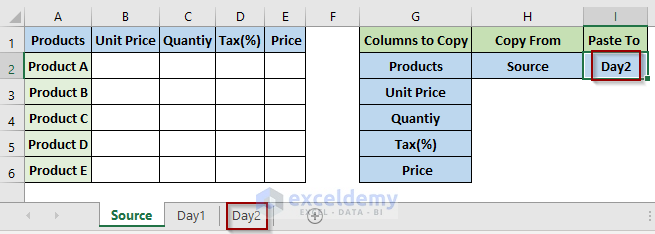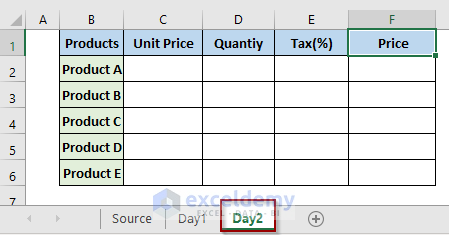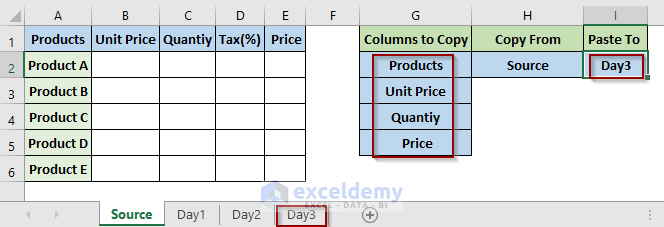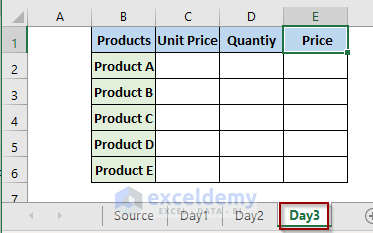This article illustrates how to define a dynamic range in Excel based on a cell value using VBA code. We’re going to explain 3 different examples to define and select a dynamic range with the necessary explanation.
Excel VBA Dynamic Range Based on Cell Value: 3 Examples
The following section describes how to open and write code in the Visual Basic Editor.
Write Code in Visual Basic Editor
Follow the steps to open the Visual Basic Editor and write some code there.
- Go to the Developer tab from the Excel Ribbon.
- Click the Visual Basic option.

- In the Visual Basic For Applications window, click the Insert dropdown to select the Module option.
Now that a new module is opened, write some code there and press F5 to run.
1. Select Dynamic Range Based on the Value of Another Cell Using VBA in Excel
Let’s say we have a list that contains a bunch of city names in cells A1:A7 with their country names in the next column (cells B1:B7). We want to configure a code that will select multiple rows from these two columns. But the number of rows to be selected should not be hardcoded, rather, we want to make it dynamic based on a cell value.
Here in cell E3, we’re going to put the number of rows (in this example, 3) to select. To do this, copy and paste the following code into the visual code editor.
Sub DynamicRangeBasedOnCellValue()
Dim DValue As Variant
Dim DRange As Range
DValue = ActiveSheet.Range("E3").Value
Set DRange = ActiveSheet.Range("A1:B" & DValue)
DRange.Select
End SubNow press F5 to run the code.
As an output, we’ve successfully selected the first 3 rows of the dataset. If we put 4 in cell E3 and run the code again.
That’s how we can change the dynamic range to be selected by running the VBA code.
Read More: How to Use Dynamic Range for Last Row with VBA in Excel
2. Define Dynamic Range Based on Cell Values Using VBA in Excel
In this example, we’ll show how to define and then select a dynamic range based on two cell values i.e., one cell value to define the starting and another to the end of the dynamic range. To illustrate this, let’s count in the following dataset ranging from A1:H12. In your case, it can be multiple times larger than this one. We’ve specified two cells in the worksheet- B15 and C15, from where we’re going to take the starting and ending range data of our dynamic range in our VBA code.
To solve the above issue-
- We need to define two cells that hold the starting and end of the dynamic range. Here we defined cells B15 and C15 to hold the starting and end of the range i.e., A1 to H5 in this example.
- Then we need to copy and paste the following code into the visual code editor.
Sub SelectDynamicRange()
Dim sRange As String, eRange As String
sRange = ActiveSheet.Range("B15"):
eRange = ActiveSheet.Range("C15")
Range(sRange & ":" & eRange).Select
End SubIn this code, we declared two different variables named sRange and eRange to hold the starting and end cell reference of the dynamic range in cells B15 and C15 respectively.
- Press F5 to run the code. We’ve successfully selected the range of Rangel A1:H5.
If we change the values of cells B15 and C15 to some other value, the selected range will change accordingly.
3. Copy and Paste Dynamic Range Based on Cell Value with Excel VBA
In this illustration, we have a demo sales info template that one shop manager has to create every day to store sales information. Using VBA code, we’re going to copy and paste the template to a new worksheet based on a cell value that holds the worksheet name. In addition, we’ll be able to decide what portion of the template should be copied and then pasted to our desired worksheet. Here is the template in the below screenshot which is in the “Source” worksheet.
To facilitate the user to choose what columns to copy in the new worksheet, we inserted the column names in cells G2:G6. In cell H2, we put the source worksheet name, and form where we’re going to copy the template to a new worksheet. We need to put the new worksheet name in cell I2.
Let’s say we’ve created a new worksheet for Day 1 of a month named “Day1”. In cell I2, we put the new worksheet name. In addition, in cells G2:G6 we put the column names to copy in the worksheet named Day1.
Now copy and paste the following code in the visual code editor.
Sub CopyPasteDynamicRange()
Dim CSheet As Worksheet, PSheet As Worksheet
Dim CRange As Range, PRange As Range
Dim CLastRow As Long, CLastCol As Long, PLastCol
Dim ColArray As Variant
Dim ColName As Variant
Dim ColNo As Long
Dim a, b As String
a = ActiveSheet.Range("H2").Value
b = ActiveSheet.Range("I2").Value
Set CSheet = Sheets(a)
Set PSheet = Sheets(b)
CLastRow = CSheet.Range("A" & Rows.Count).End(xlUp).Row ' last row
CLastCol = CSheet.Cells(1, Columns.Count).End(xlToLeft).Column ' last column
With CSheet
Set CRange = .Range(.Cells(1, "A"), .Cells(CLastRow, CLastCol))
End With
PLastCol = PSheet.Cells(1, Columns.Count).End(xlToLeft).Column ' last column
ColArray = Range("G2:G6").Value ' column headers
For Each ColName In ColArray
ColNo = Application.Match(ColName, CRange.Rows(1), 0)
PLastCol = PLastCol + 1
CRange.Columns(ColNo).Copy Destination:=PSheet.Cells(1, PLastCol)
Next ColName
End SubPress F5 to run the code. Now navigate to the worksheet named “Day1”. The output is here below.
Similarly, we can make another worksheet for Day2 and run the code again after changing the I2 cell value to Day2.
The output is-
Now let’s say we need to copy the template without the Tax(%) column in the Day3 worksheet. For this, we need to set up the values like this.
In the output, in the Day3 worksheet, we have the template but without the Tax column.
Read More: Excel VBA: Copy Dynamic Range to Another Workbook
Things to Remember
- In the VBA code, we used the Range.Select method to select the dynamic range.
Download Practice Workbook
Download this practice workbook to exercise while you are reading this article.
Conclusion
Now, we know how to define a dynamic range in Excel based on a cell value using VBA code. Hopefully, it will help you to use these methods more confidently. Any questions or suggestions don’t forget to put them in the comment box below.
Get FREE Advanced Excel Exercises with Solutions!
